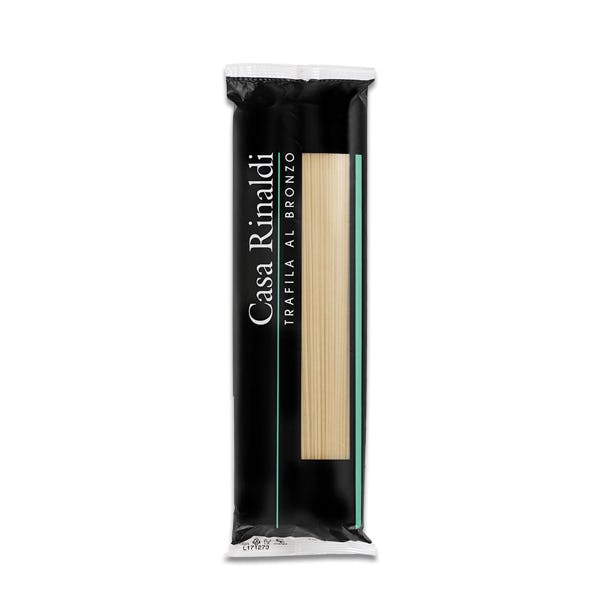
TASTING NOTES FROM THE CURATOR
Arguably the most popular type of pasta outside Italy, spaghetti is used around the world for a great assortment of dishes. Spaghetti is actually the plural form of “spaghetto,” which is the diminutive form of “spago,” which means “twine” or “string.”
It’s made with milled wheat and water, and is easy to prepare, and easy to enjoy.
PREPARATION AND PAIRINGS
The Casa Rinaldi Spaghetti N. 205 can be enjoyed with red sauces, creamy white sauces, pesto sauces—anything! A classic recipe is a very simple, very easy aglio e olio. Cook the pasta according to instructions, and save some of the pasta water. In a pan, add in olive oil and sliced garlic. Cook the garlic on low-medium heat until garlic is lightly colored. Add in some chili flakes, and some of the reserved pasta water. Let it simmer, then add in your cooked spaghetti, and some parsley. Toss until the pasta is well-coated. Season with a little salt, and enjoy!
Another classic spaghetti recipe is the cacio e pepe. Cook your pasta according to instruction, and save some pasta water. Place the drained pasta back into the pot on low heat. Add in the reserved pasta water and butter, and toss until butter is melted. Add in grated Pecorino Romano, and some ground black pepper. Toss together until a creamy sauce forms. Top with more grated cheese, and serve while hot.
THE BRONZE AGE
The Casa Rinaldi Spaghetti N. 205 is made with a bronze die (trafila al bronzo). A die is a mold in which pasta manufacturers push pasta dough through.
Modern industrial producers use Teflon dies, resulting in pasta that is smooth and shiny. Unfortunately, it means that sauce usually slides off. Bronze dies may be traditional but they are still the safest and quality option as compared to Teflon. Bronze dies make pasta that is a little courser, and more porous, allowing sauce to stick and cling.
Storage Instructions
Store dry, uncooked pasta in a cool, dry pantry for up to one year. Preserve freshness by storing dry pasta in an air-tight box or container. Store plain (no sauce or other ingredients) cooked pasta in a container or plastic sealable bag in the refrigerator for up to five days and up to three months in the freezer.







